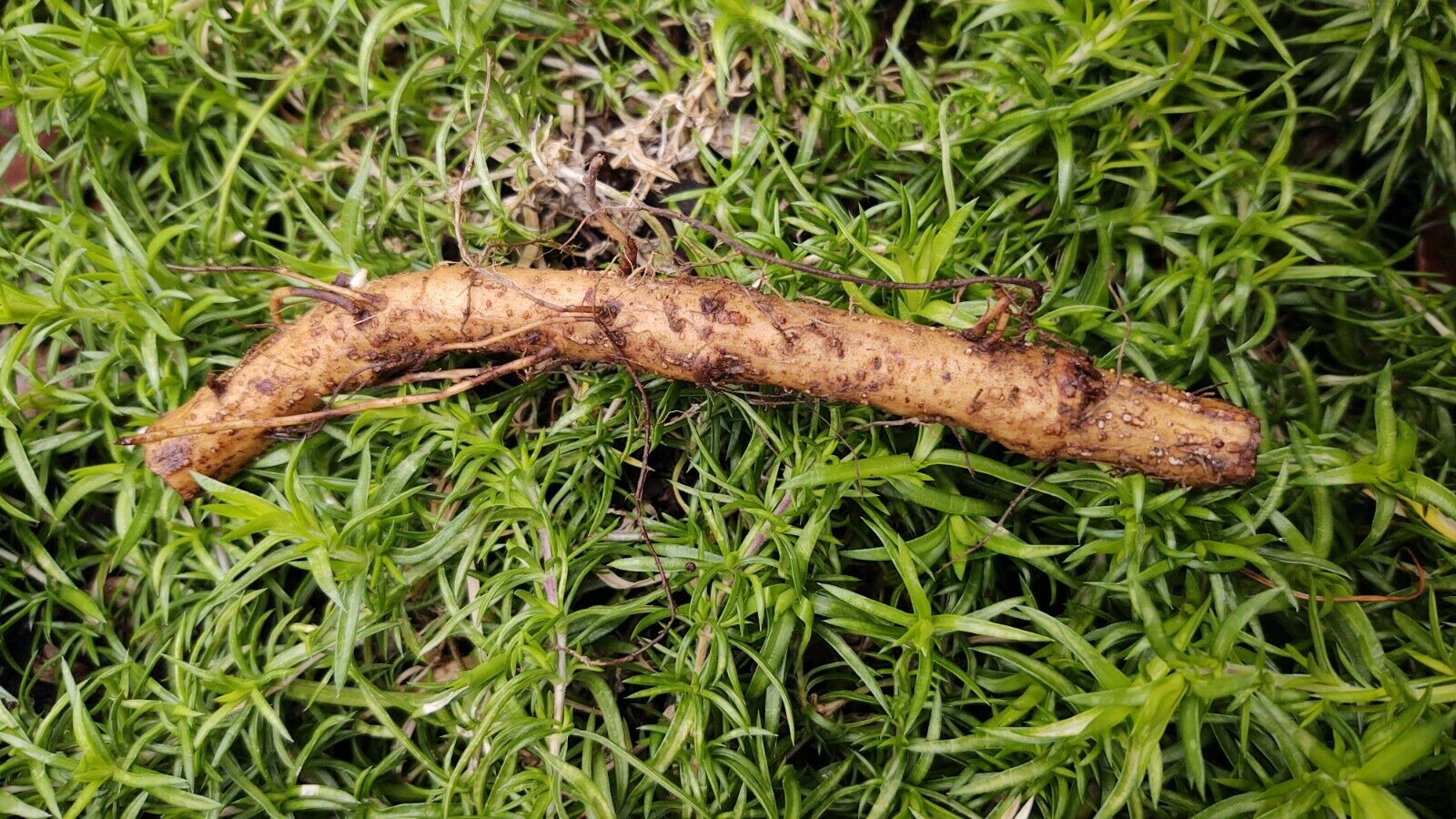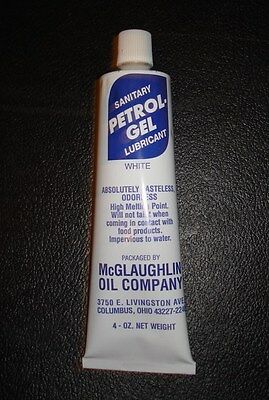-40%
Hop rhizomes (Cascade,Chinook,Centennial,Mt Hood,Goldings,Willamette,MORE)
$ 3.03
- Description
- Size Guide
Description
Grow your own hops! Use to brew beer throughout the year, make a fresh hop beer, hop tea, shade during the summer, ornaments, or leave cones around your home for a nice aroma! These are from established hop plants.Price is per rhizome. Shipping cost shown is for first rhizome, $.50 each additional.
Sorry, no combined shipping.
Rhizomes orders are packaged daily and are sent no later than the next business day. No shipping outside the United States.
I started growing hops in 2007 and have grown several dozen varieties over the years.
Cascade - Alpha acids 4.5% to 9%. Used for bittering and aroma. Floral notes, flavors and aroma of citrus, primarily grapefruit and some lemon.
Cashmere - Alpha acids 5% to 10%. Mostly used for aroma. Tropical flavors including lemon, lime, peach, melon, coconut, and some herbal.
Chinook - Alpha acids 12% to 14%. Primarily for bittering. Flavor and aromas of pine, herbal, floral, and noticeable grapefruit. Neomexicanus origin.
Crystal - Alpha acids 3.5% to 5.5%. Great for aroma. Soft and good floral, wood, spicy notes of cinnamon, nutmeg, pepper, high usage may produce orange peel, lemon.
Nugget - Alpha acids 9.5% to 14%. Used for bittering and aroma. Flavor and aromas of herbal, wood, spicy, and hint of lemon.
Centennial - Alpha acids 7% to 12%. Primarily for bittering. Similar to Cascade, aromas of pine, citrus, and floral.
Mt. Hood - Alpha acids 4% to 8%. Used for aroma. Spicy, floral, herbal notes.
Goldings - Alpha acids 4% to 6%. Used for aroma. Array of aromas including floral, lavender, spice, honey, earthy, lemon, and herbal.
Triumph - Alpha acids 10.6% to 11.4%. High alpha acids but best for aroma. Heavy fruit notes including peach, lime, orange, soft pine and herbal.
Sterling - Alpha acids 9% to 12%. Used to aroma. Herbal, spicy, with hints of floral, lemon, and pineapple.
Galena - Alpha acids 12% to 14%. Used for bittering and aroma. Spicy, blackcurrant, grapefruit.
Willamette - Alpha acids 4% to 6%. Mostly used for aroma. Moderate spicy, pepper, floral, and fruity flavors.
All varieties will vary in size. Small rhizomes may be as skinny as a pencil, while some may be as thick as a sharpie pen. Large rhizomes are 2-3 times diameter, and may have more white sprouts, as they are cut closer to the crown.
It is recommended to get at least 2 of the same variety and plant together to make sure at least one grows. Unfortunately, as with any agricultural product, results are not guaranteed. Most growers experience good results.
RHIZOME STORAGE:
May be stored in the refrigerator for a few months before planting. Keep root lightly moist in a plastic bag. Do not drench or let it sit in water or the root may become soft and rot. Check weekly for mold and remove any. DO NOT FREEZE OR IT WILL DIE.
WHEN TO PLANT:
Rhizomes may be planted any time of the year when the soil is soft and workable. If planted in the fall or winter, they will go dormant, then wake up and sprout between March and May. The ideal planting time is spring after the last frost.
SOUTHERN EXPOSURE:
Hops grow best on the south side of your home or other structure. They need full sun, between 6-8 hours a day in the summer to fully grow and produce cones.
RHIZOME SPACING:
Same varieties (example two Chinook) can be planted as close as 3 feet, while different varieties (example one Chinook, one Cascade) should be at least 5 feet apart. Even though rhizomes are small, a fully established plant will be very large. Some of my first year root balls were baseball size, some were basketball size.
PLANTING IN GROUND:
It is best to plant in the ground as soon as you receive the rhizome. Dig approximately 4 inches deep, and as wide as the rhizome, so it will be about 2 inches below the surface. Lay it horizontal with most of the white buds (shoots) pointing up. Some may be pointing down. Cover with a mixture of soil and fertilizer as explained below.
PLANTING IN CONTAINER:
A container can be used to get growing started. Recommend at least 10 gallons (40 qts) capacity. Bigger is better. Some growers use a half barrel. The roots will get VERY big, some in the first year, some the following year, and a container will restrict root growth and hop production. It is best to limit container growth to one or two years, then transplant into the ground. To transplant, lay container on its side, and gently remove the plant and roots. Dig a hole the size of the hop plant mass, and place it along with some of the potting soil into the ground. Adding the soil will help avoid transplant shock. Water after transplanting.
SOIL AND FERTILIZER:
There are many mixture combinations. I use 80% gardening (or potting) soil, 20% steer manure (or similar fertilizer), and some growers use a 50/50 mixture. Liquid fertilizer also works. About half the soil in containers should be replaced every year or two year as the nutrients will be consumed by the plant. This is not necessary once in the ground. It is recommended to fertilize every year whether in containers or in ground.
WATERING:
Keep the soil moist, never saturate or let rhizome remain in water, or the root may rot and die. Water once a day on very warm or hot days. On cool or overcast days, if the soil is damp, watering is not necessary, if the soil is dry, a small drink should be sufficient. Do not let the soil dry out completely. DO NOT OVER WATER. Yellow leaves are a sign of excess water.
SPROUTING:
Some sprout in March, some in May. If none have sprouted by late spring, you can dig up the rhizome to make sure it is not soggy or rotted. If so, it is dead.
HEIGHT:
Hops grow anywhere from 18 to over 25 feet tall. It is recommended to use (or build) a tall trellis. You can grow them on the side of your home or along a fence if desired. As the hop begins to grow, train the bines by wrapping them clockwise around a pole, jute string, or other supporting line.
PICKING AND STORING:
Harvest is between August and September. Pick a cone off the bine and rub it between your fingers. Hop leaves have lupulin glands which contain yellow powder. If there is very little or no powder, the cones are not ready. Once the cones are ready, they should be picked within a few days, maximum one week. Hops can turn brown quickly.
O
nce picked, leave out to dry for about a day, then either vacuum pack or seal in plastic bags and refrigerate or freeze. They will last a couple years.
(BREWERS NOTE: The yellow powder contains alpha and beta acids used for bittering, and many essential oils, which may give pine, earthy, wood, herbal, fruit, spicy, citrus, tropical, and other flavors and aromas depending on the hop variety.)
USING HOPS:
Once picked, you have many choices.
Fresh hop beer:
Pick cones off the bine
on brew day
, keep very moist, and add to boil kettle the same day. Wet hops are about 80% water, so you will need to use approximately 4x the quantity. Fresh hopped beer (sometimes called wet hopped) truly brings out the flavors of the hops!
Pseudo fresh hop beer:
Take a handful of freshly picked hops, place in coffee filter over glass, and pour your favorite beer over it.
Storing for later use:
Lay on a towel or newspaper and let the cones dry for about 24 hours. Cover to avoid blowing away if necessary. Once dry, place in ziploc or freezer bags and remove all air. You can also use a food sealer.
Wet stored hops often mold or become soggy.
Label with type of hop and date. Store in the refrigerator or freezer, although freezing will preserve longer. Alpha acid content will go down each year.
Decorations:
H
ops give a nice aroma that lasts for many days, sometimes a couple weeks, and will slowly dry out.
Hop tea:
Quantity depends on how strong you want the flavor and aroma. Pour boiling water over a filter containing the hops.
PEST CONTROL:
Most vegetable bug sprays will work fine. I used Safer brand Insect Soap (non organic) for years with good results. Downy and powdery mildew will also damage hops. Insect repellent plants may help with pest control. For this I used several mentha pulegium (also called pennyroyal) plants. It has purple blooms and a strong peppermint aroma. They worked very well.
PRUNING:
Fully matured plants (3+ years) will be large and may spread out several feet. If the rhizomes are not trimmed, they can take over your yard. It is highly recommended to trim them after harvesting hops. To do this, locate the center crown, and go out about 1 foot around the plant. Dig the rhizomes near the surface and prune them.
CLIMATE:
Areas with mild to warm temperatures, plenty of sun in the summer, and well drained soil work best. Some varieties do not grow well or at all in very hot climates, such as Southern California, Arizona, and Florida, although some growers have reported success with Cascade, Centennial, Chinook, Nugget, Tahoma, and Cashmere.
GROWTH AND YIELD EXPECTATIONS:
During the first year, rhizomes are mostly creating roots, although some may grow to full height and produce some hops. Second year anticipate about 50% total hops. Third year and beyond should give full harvest. Plants can grow several inches a day during the summer. Each plant will produce a different amount. For example, I picked a 4 year old Willamette plant, and filled a 13 gallon plastic bag. Wonderful aroma!
WINTER:
The plant will die down to the crown and sprout next spring. You can prune the dead bines. Plants and rhizomes can remain outside. They are very strong and can withstand snow, ice, and well below freezing temperatures. Some growers cover the crown with mulch to help protect the root from freezing, although it is not required.
LIFE EXPECTANCY:
T
here is no exact lifespan of a hop plant. Many are known to live 20 years, some up to 60, and some varieties are over 100 years old!
MOLD:
Rhizomes may develop spots of mold. White indicates the rhizome is healthy, but the mold should be removed. Black is a sign of decay and that portion of the rhizome should be cut off.
FEEDBACK:
Please contact me before leaving neutral or negative feedback. I will try my best to resolve problems. I want you to be happy growing hops!















